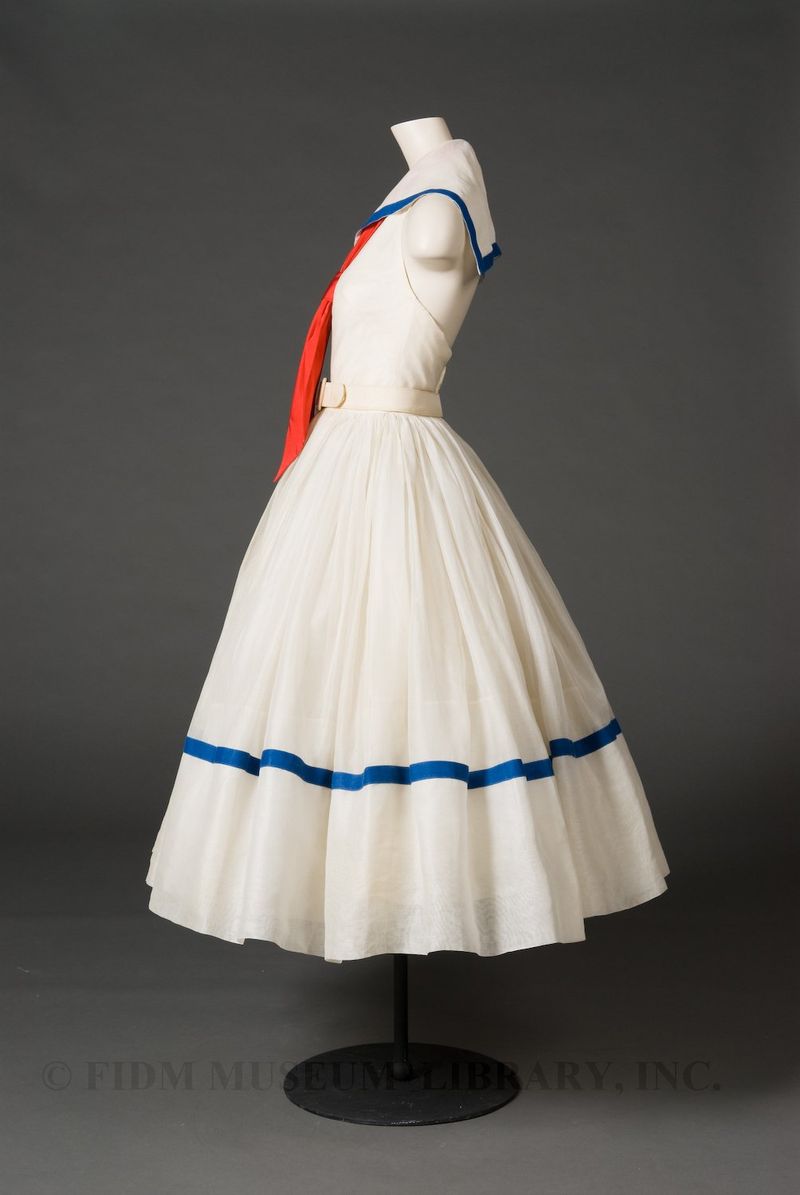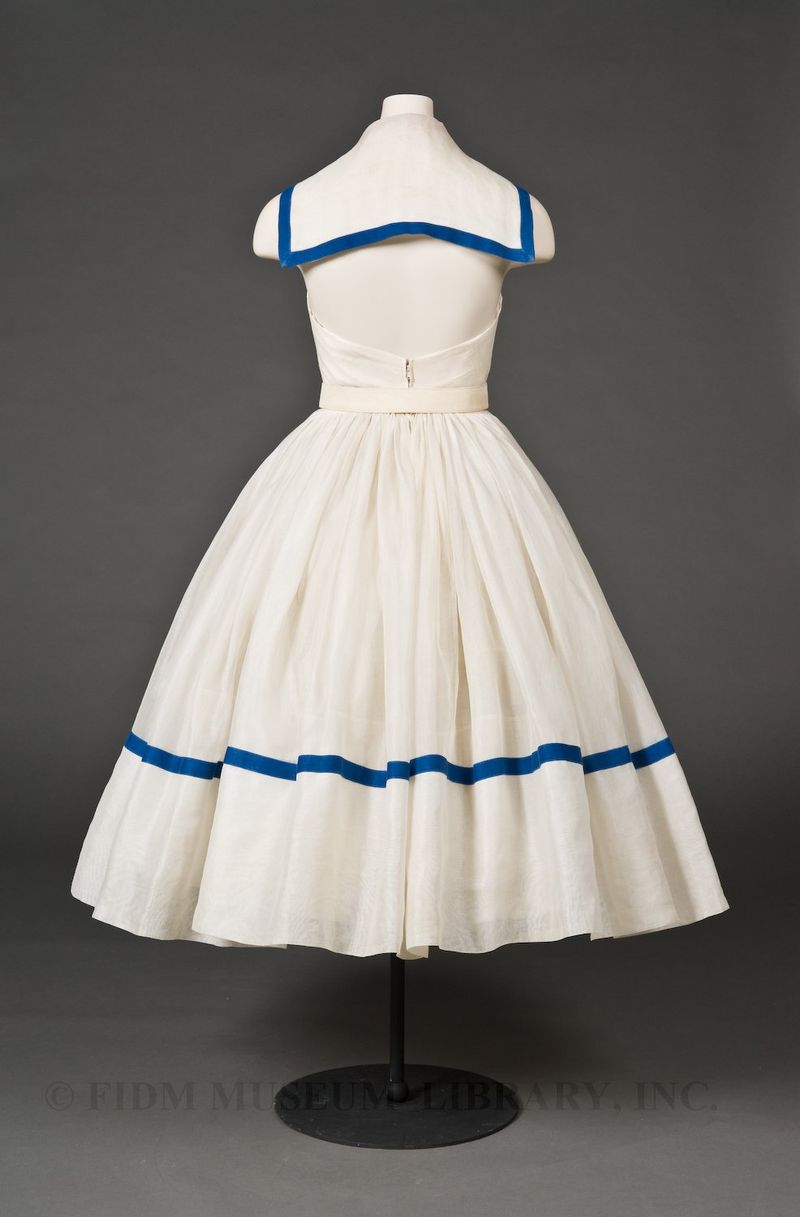Norman Norell (1900-1972) was born and raised in the midwest (Indiana) and moved to New York City as soon as possible. Norell studied at Parsons School of Design and after a brief return to Indiana to open a batik shop in 1920 or 1921, he returned to the east coast to study at Brooklyn’s Pratt Institute. In the early 1920s, there were still film studios in the New York area and Norell found work as a costume designer and later at the garment wholesaler Charles Armour. Between 1928 and 1940, Norell designed garments for the legendary fashion taste-maker Hattie Carnegie. In 1941, Norell became an employee of Anthony Traina. Traina, a garment manufacturer, offered Norell a small salary if his name were to appear along with Traina’s on the label, and a larger salary if Norell’s name was not on the label. Norell took the smaller sum and remained a salaried employee until 1960, when Traina retired. From 1960 until his death in 1972, Norell’s designs were labeled solely with his own name.
 Day dress
Day dress
Norman Norell for Traina-Norell
1951
Gift of Mrs. Clarissa Dyer
2003.794.4A-C
Throughout his career, Norell was often called the “rival of Paris.” This moniker was intended to convey an extremely high-standard of workmanship on par with the couture designers of Paris. Unlike couture designers, who produce each garment for a specific individual, Norell applied his high-standards of workmanship to garments produced on a large scale. Though technically considered ready-to-wear, each Norell garment was completed start-to-finish by a single worker and often required a great deal of hand-work. In order to maintain quality control, Norell personally supervised the production of his designs and maintained a profit cap of $2 million.
The level of workmanship and oversight that went into the production of each garment resulted in high prices. Norell’s design aesthetic, however, was so timeless that women kept and wore their Traina-Norell or Norell garments for many years. In his 1972 obituary, one client remarked,”I wore an 11-year-old Norell to the symphony the other night, and everyone thought it was new.”1 Another client commented on the overall wearability of Norell’s designs: “There’s something about his clothes that made you feel marvelous.”2
Once Norell landed on a successful design, he was not afraid of repeating himself. As he said in the 1960s, “To qualify as a designer one should not be afraid to repeat a good design, and certainly must have his own signature.”3 One of Norell’s signatures was the sailor dress, which appeared throughout his career. The FIDM Museum version dates from the early 1950s and is a classic representation of the 1950s silhouette. Other versions feature a reverse color scheme (navy with white accents), long sleeves, or a slightly modified silhouette. When Norell’s March 1969 collection did not feature even one sailor dress, a reviewer noted “He’s been making sailor dresses for so long, it seems as if he invented them.”4 That same season, however, New York designers Geoffrey Beene and Bill Blass offered versions of the sailor dress, demonstrating the influential nature of Norell’s persistent vision.
1 Morris, Bernadine. “Norman Norell, Designer, Dies; Made 7th Ave. the Rival of Paris” New York Times 26 Oct. 1972.:89.
2 Morris. 89.
3 quoted in Ghelerter, Donna. “Norell, Norman.” Encyclopedia of Clothing and Fashion. Ed. Valerie Steele. Vol. 2. Detroit: Charles Scribner’s Sons, 2005. 3 pp. 3 vols. Gale Virtual Reference Library. Gale. Fashion Inst of Design & Merchandising. 28 Aug. 2009.
4 Morris, Bernadine. “Designers Take to the Sea” New York Times 13 Mar. 1969.:42.




i may have just fainted. beautiful!!
It is a lovely dress…so glad you like it!